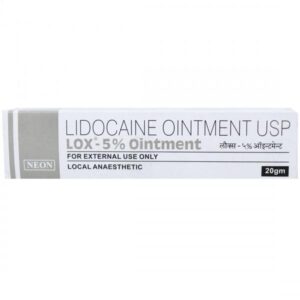LIGNOCAINE + PROPYLENE
Lignocaine: Lignocaine, also known as lidocaine, is a local anesthetic drug that is commonly used to relieve pain or produce numbness in a specific area of the body. It belongs to the amide class of local anesthetics.
Lignocaine works by blocking the transmission of pain signals from the nerves to the brain. It does this by inhibiting the ion channels responsible for the conduction of sodium ions, thus preventing the generation and conduction of action potentials in the nerves.
This drug has a wide range of applications. It is commonly used in medical and dental procedures, such as dental extractions, minor surgical procedures, and dermatological treatments. It can also be used to provide local anesthesia during labor or delivery, and for nerve blocks and spinal anesthesia.
The dose of lignocaine can vary depending on the specific use and the patient’s age, weight, and medical condition. It is generally administered as an injection or by topical application. The dosage is determined by healthcare professionals based on individual needs.
Like any medication, lignocaine can have side effects. Common side effects include temporary numbness or a sensation of burning at the application site. Other possible side effects include dizziness, headache, nausea, vomiting, and an allergic reaction. In rare cases, lignocaine can cause more serious side effects such as seizures, irregular heartbeat, or difficulty breathing.
It is important to follow the instructions provided by healthcare professionals and report any unusual or severe side effects. Lignocaine should only be used under medical supervision and proper monitoring to ensure safety and effectiveness.
Propylene: I’m sorry, but there is no drug called “Propylene.” It is possible that you may be referring to propylene glycol, which is a common ingredient in many pharmaceutical and cosmetic products. Propylene glycol is a colorless and odorless liquid that is widely used as a solvent or humectant.
Propylene glycol is used in medications as a vehicle to dissolve active ingredients and facilitate their absorption into the body. It is commonly found in various topical preparations, including creams, ointments, and lotions. It may also be used as a component in oral and intravenous medications.
The mechanism of action of propylene glycol is primarily as a solvent or carrier for other active substances. It helps in the dissolution and dispersion of drugs, allowing for their effective delivery to the target site.
The dose and administration of propylene glycol vary depending on the specific medication or formulation it is used in. It is important to follow the instructions provided by your healthcare professional or the product label.
Propylene glycol is generally considered safe for use when following recommended dosage guidelines. However, like any other drug or substance, it may cause some side effects. The most common side effects include skin irritation or rash, especially in individuals with sensitive skin. Some individuals may also experience allergic reactions, which may manifest as itching, swelling, or difficulty breathing. If you experience any concerning side effects, it is recommended to consult with a healthcare professional.
It is important to note that while propylene glycol is generally well-tolerated, there have been rare reports of more serious side effects, such as liver or kidney problems. These cases are uncommon, but if you have any underlying medical conditions, it is important to consult with your healthcare provider before using products containing propylene glycol.
It’s worth mentioning that propylene glycol should not be confused with ethylene glycol, which is a toxic substance that is found in antifreeze and can be extremely harmful if ingested.

